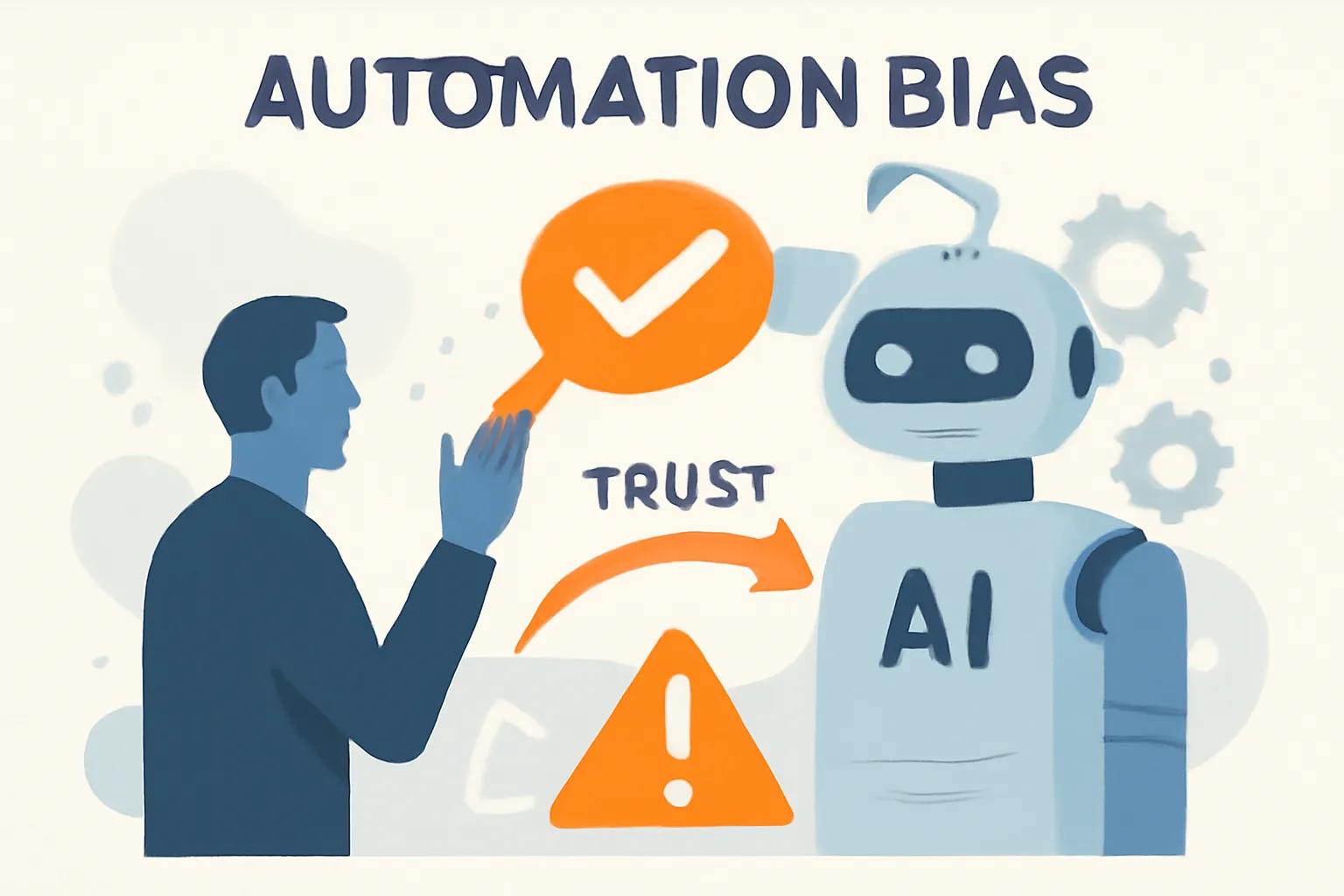What Is Automation Bias?
Automation bias refers to the tendency of humans to overly trust automated systems, often ignoring contradictory information or alternative options. This bias can lead to errors, especially when users defer to AI recommendations without critical evaluation. In sectors like healthcare, aviation, and finance, such over-reliance can have serious consequences.
🧠 Why Does Automation Bias Occur?
Several factors contribute to automation bias:
- Cognitive Load Reduction: Humans may rely on AI to reduce mental effort, especially in complex decision-making scenarios.
- Perceived Objectivity: There’s a belief that machines are more objective and less prone to human error.
- Overconfidence in Technology: The rapid advancement of AI can lead to misplaced trust in its capabilities.
⚠️ Real-World Implications
Automation bias has manifested in various critical situations:
- Aviation: Pilots have sometimes relied too heavily on autopilot systems, leading to accidents when manual intervention was necessary.
- Healthcare: Medical professionals might over-rely on AI diagnostics, potentially missing out on nuanced patient information.
- Finance: Automated trading systems can make rapid decisions that, if unchecked, might lead to significant financial losses.
🛠️ Strategies to Mitigate Automation Bias
To counteract automation bias, consider the following approaches:
- Enhanced Training: Educate users about the limitations and potential pitfalls of AI systems.
- Human-in-the-Loop Systems: Ensure that AI recommendations are always subject to human oversight and validation.
- Transparency: Design AI systems that provide clear explanations for their decisions, allowing users to understand the rationale behind recommendations.
- Regular Audits: Conduct periodic reviews of AI decisions to identify patterns of over-reliance and areas for improvement.
✅ Conclusion
While AI offers significant advantages, it’s crucial to maintain a balance between automation and human judgment. By understanding and addressing automation bias, we can harness the full potential of AI while ensuring safety and efficacy in decision-making processes.
